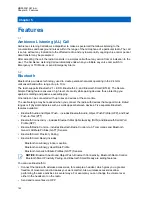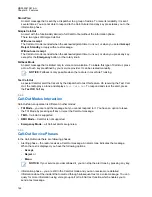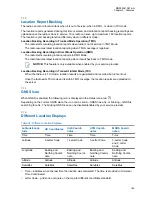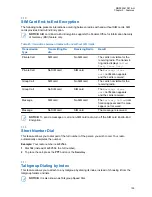
5.2.4
Bluetooth Smart Proximity Pairing
With the use of Proximity Pairing, you can instantly connect your radio with Bluetooth Low Energy
(BTLE) devices.
BTLE devices are various types of sensors the radio can be paired with using Bluetooth, for example
gas or heart rate sensors.
To pair the radio with a sensor, move the radio close to a sensor and press and hold the One-Touch
Button. A tone indicates successful pairing and connection. After the connection, the radio collects
information from the sensor.
5.2.5
Bluetooth Sensor Data
Your service provider can configure the details of the sensor information the radio displays.
Depending on the type of sensor connected to the radio and the setup configured by your service
provider, various types of information are displayed. The following sections contain information on the
most significant, pre-determined data the radio displays.
Sensor Battery Information
The radio displays the percentage of the remaining battery power of the connected sensors.
Heart Rate Sensor
If a heart rate sensor with the Energy Expended feature is paired and connected to the radio, two
values are displayed:
• Heart Rate in bpm
• Energy Expended in kJ
Sensor Alarm
A radio paired with appropriate sensors increases the security of the radio user by making the user
more aware of their surroundings. If the collected values exceed limits set by your service provider, the
radio plays an alarm tone, light the LED, and display a warning message. The alarm concerns, for
example, low battery, high toxicity, or low/high heart rate.
The alarm is active for a pre-defined time or until you discard it.
5.3
Buffer Full Overwrite Policy
Upon receiving a text message, the radio places the text into a circular buffer. You are notified when a
new text message is received and a quick access to read the message is provided. If a delivery report
is requested, the radio sends it upon receipt of the message by SDSTL. If a consumed report is
requested, the radio sends it when you read the message.
NOTICE:
If you read the message when the radio is out of service, the report may not be sent.
You can save incoming or edited (outgoing) text messages. These messages can be edited and sent.
You can also protect the message from being deleted or from the overwriting policy of the radio.
For each message, you can verify its timestamp. The timestamp displayed is extracted from the SDS
TL PDU. The timestamp is generated and inserted to the message by the SwMI.
MN002041A01-AH
Chapter 5: Features
144
















































